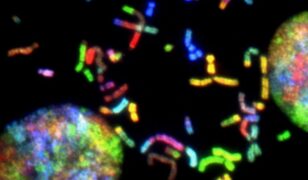NSF launches National Optical-Infrared Astronomy Research Laboratory

On 1 October 2019, the nighttime astronomy facilities supported by the National Science Foundation (NSF) transitioned to operating as one organization, NSF’s National Optical-Infrared Astronomy Research Laboratory. The new organization operates five scientific programs: Cerro Tololo Inter-American Observatory, the Community Science and Data Center, Kitt Peak National Observatory (all formerly known as the National Optical Astronomy Observatory), Gemini Observatory, and the upcoming Large Synoptic Survey Telescope, and is managed by the Association of Universities for Research in Astronomy.
The National Science Foundation (NSF) and the Association of Universities for Research in Astronomy (AURA) announced the launch of integrated operations of all of NSF’s nighttime astronomical facilities under NSF’s National Optical-Infrared Astronomy Research Laboratory (NSF’s OIR Lab). This new organization is the preeminent US center for ground-based optical-infrared astronomy, enabling breakthrough discoveries in astrophysics by developing and operating state-of-the-art ground-based observatories and providing data products and services for a diverse and inclusive community.
Patrick McCarthy New Director
NSF and AURA also announced the appointment of Patrick McCarthy as the Director of NSF’s OIR Lab. McCarthy was most recently Vice President of the Giant Magellan Telescope project and Astronomer at the Carnegie Institution for Science. McCarthy said of the new organization, “Integrating these facilities into one multi-mission center brings together diverse pathways for astronomical exploration, facilitates community coordination, and enables the discoveries of the future. The integrated center will also stimulate new domestic and international collaborations and provide additional opportunities for staff while expanding scientific capabilities and improving the experience for users.”
Over 60 Years of Optical-Infrared Astronomy
Since 1958, NSF has sponsored ground-based optical-infrared astronomical research facilities in the US and Chile managed by AURA. The first site developed was Kitt Peak National Observatory (KPNO) in Arizona, followed soon after by Cerro Tololo Inter-American Observatory (CTIO) in Chile. In 2000 the Gemini Observatory in Hawai‘i and Chile began operations, funded by NSF and an international consortium. The most recent addition, the Large Synoptic Survey Telescope (LSST), currently under construction in Chile, is a cutting-edge observatory sponsored by NSF and the US Department of Energy.
All of these NSF facilities are managed by AURA but were previously structured as separate organizations. The National Optical Astronomy Observatory (NOAO) operated the telescopes on Kitt Peak and Cerro Tololo and the Community Science and Data Center (CSDC). Separately, AURA first managed Gemini Observatory as well as the LSST construction project. On 1 October, NOAO, Gemini Observatory, and LSST’s operations component transitioned to a single management structure, and the NOAO name was retired. As LSST finishes construction, the ramped-up operations will become an integral component within NSF’s OIR Lab with full operations beginning in 2022.
Source: NSF







